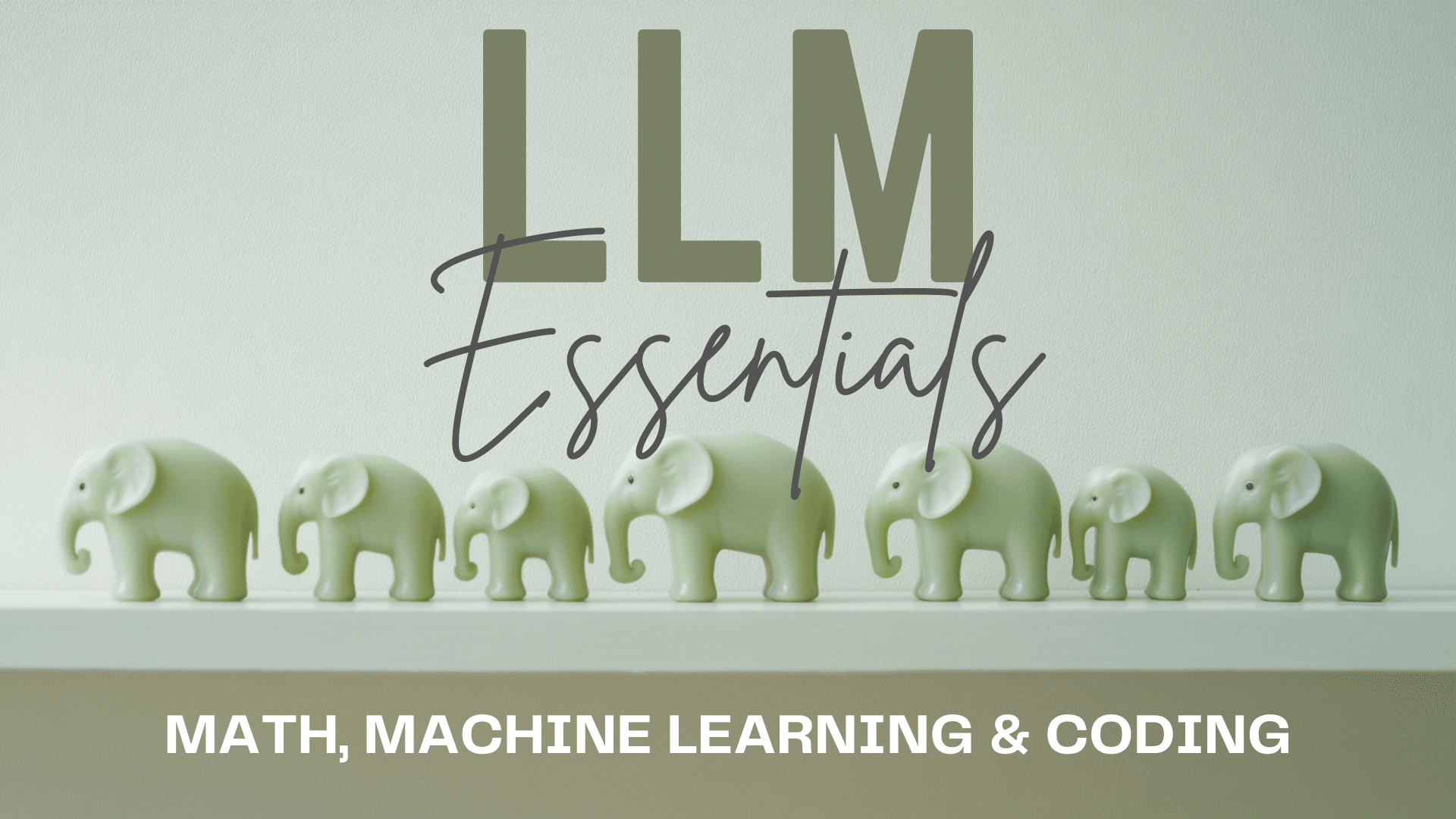
Image by Author | Midjourney & Canva
Introduction
Large language models (LLMs) have transformed the fields of machine learning, artificial intelligence, and data science — to name a few — offering groundbreaking capabilities in natural language processing. However, effectively developing, fine-tuning, or deploying these models requires a multidisciplinary skill set.
LLMs operate at the intersection of mathematics, machine learning, and software engineering. For beginners and practitioners alike, acquiring these skills is critical. In this tutorial, we willl cover:
- Foundational Mathematical Skills: Understanding linear algebra, calculus, and probability is key to grasping how LLMs process and generate language.
- Machine Learning Architectures & Techniques: Neural network design, pretraining, fine-tuning strategies, and emerging paradigms like retrieval augmented generation (RAG) are central to modern LLM development.
- Coding & Software Engineering: Robust Python programming and the use of deep learning frameworks, along with integration and deployment strategies, are essential to bring LLMs into production.
The goal of this article is to guide you through the essential mathematical foundations, machine learning techniques, and coding practices needed to work with LLMs. You will be presented with the concepts, as well as references and links for each. By the end of it, you’ll have a clear roadmap to develop the necessary competencies to work effectively with LLMs.
1. Foundational Mathematical Skills for LLM Development
Let’s start by looking at the math skills needed for truly understanding and working with language models.
Linear Algebra and Tensor Operations
At the core of LLMs are tensor operations and matrix multiplications, which facilitate the efficient handling of high-dimensional data. Key concepts include:
Understanding these concepts enables you to grasp how LLMs process language patterns and scale computations efficiently.
Calculus and Optimization
Training LLMs involves minimizing loss functions, a process that is deeply rooted in calculus:
- Gradient-based optimization: Techniques like stochastic gradient descent (SGD) and its variants rely on partial derivatives and the chain rule to update model parameters
- Backpropagation: This process uses gradients to adjust millions of parameters, making understanding the underlying calculus essential
- Advanced optimizers: Algorithms like Adam combine momentum and adaptive learning rates, requiring a basic understanding of second-order derivatives and exponential moving averages
By mastering these concepts, you’ll be better equipped to fine-tune LLMs and ensure they converge effectively during training.
Probability and Statistical Reasoning
Probability theory underpins the behavior of LLMs during text generation:
A strong foundation in probability ensures that you can effectively design and evaluate LLMs.
2. Machine Learning Architectures and Techniques
Now let’s turn our attention to machine learning. We will cover the fundamentals you need, as well as the necessary LLM bases to build upon.
Neural Network Fundamentals
A solid understanding of neural networks is critical:
These neural network principles form the backbone of modern LLMs.
Pretraining and Fine-Tuning Strategies
Large language models typically follow a two-stage training process:
- Pretraining: Models are trained on large, unlabeled corpora using objectives like masked language modeling (MLM) or autoregressive next-token prediction
- Fine-Tuning: After pretraining, models are adapted to specific tasks; techniques such as Parameter-Efficient Fine-Tuning (PEFT), including methods like LoRA (Low-Rank Adaptation), allow domain-specific customization without retraining the entire model
Understanding these strategies is essential for tailoring LLMs to various applications.
Retrieval Augmented Generation (RAG)
RAG systems integrate external knowledge bases with LLMs to enhance information retrieval:
- Dense retrieval techniques: Embedding models map queries and documents into aligned vector spaces, facilitating efficient similarity searches
- Vector indexing: Tools like FAISS (Facebook AI Similarity Search) optimize vector indexing, reducing latency in real-time applications
Combining retrieval mechanisms with generation capabilities can significantly enhance model performance.
3. Software Engineering and LLM Integration
Finally, we look at the coding and software engineering skills needed to be able to implement, leverage, and incorporate language models in your projects.
Python and Deep Learning Frameworks
Python remains the language of choice for LLM development. Proficiency in libraries such as PyTorch and TensorFlow is essential.
Hugging Face has become a clear leader in the space, now encompassing a full-fledged language model ecosystem, from its Transformers library for model implementations, to model repository, to datasets, to hosting, and beyond. Knowledge of navigating their environment is almost a must at this point. LlamaIndex and LangChain are 2 popular and well-used libraries for developing LLM and RAG applications.
API Integration and Scalability
Deploying LLMs requires robust integration with production systems:
- REST APIs and cloud endpoints: Tools like FastAPI facilitate rapid deployment of LLM-based services
- Containerization and orchestration: Docker and Kubernetes enable scalable deployments, ensuring that LLMs can handle high-volume requests
- Vector databases: Integrating with systems such as Pinecone or Milvus can optimize real-time retrieval, essential for applications like chatbots
These practices ensure that your LLM solutions are not only powerful but also reliable and scalable.
Final Thoughts
Mastering the skills needed for LLMs is an interdisciplinary journey that spans advanced mathematics, innovative machine learning techniques, and coding skills with rigorous software engineering practices. As LLMs continue to evolve — integrating capabilities like multimodality and reasoning — the importance of these foundational skills becomes even more pronounced.
By building a strong grounding in linear algebra, calculus, and probability, you’ll understand the inner workings of these models. Coupled with a deep understanding of neural network architectures, and pretraining/fine-tuning strategies, you’ll be well-prepared to tackle real-world challenges. Finally, robust coding and deployment practices ensure that your LLM applications are both scalable and secure.
Matthew Mayo (@mattmayo13) holds a master’s degree in computer science and a graduate diploma in data mining. As managing editor of KDnuggets & Statology, and contributing editor at Machine Learning Mastery, Matthew aims to make complex data science concepts accessible. His professional interests include natural language processing, language models, machine learning algorithms, and exploring emerging AI. He is driven by a mission to democratize knowledge in the data science community. Matthew has been coding since he was 6 years old.
